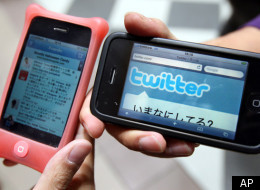 |
The Art of Copy & Paste
Source: Geek System |
The issue of plagiarism is indeed taken seriously due to Copyright infringements and has to be correctly cited and referenced when the work of others has been taken as a source of credit.
 |
German's Defense Minister, Karl-Theodor zu Guttenberg
Source: Ziko's Blog |
This case, which brought to Karl-Theodor zu Guttenberg, German’s Defense Minister, being stripped off his master’s degree due to the plagiarism scandal in BBC’s News Magazine article on ‘Plagiarism: The Ctrl+C, Ctrl+V boom’ published on 2nd March 2011 (BBC News Magazine, 2011). This eventually led to Mr. zu Guttenberg’s resignation despite the encouragement given by his fellow soldiers not to resign as mentioned by Mr. zu Guttenberg himself, “I have reached the limits of my strength” (ABC News, 2011).
The 39 year old German Defense Minister is believed to be the country’s most political idol (The Guardians, 2011) with great charismatic skills in buying the hearts of his people and proficient in politics whom had plagiarize over half of his PhD thesis which was completed five years ago from Professor Barbara Zehnpfennig who is a host in academics and journalist (ABC, 2011). According to Professor Zehnpfennig, a great deal of the thesis was taken word by word by Mr. zu Guttenberg with just a minor change whom also changed the year of his thesis (ABC, 2011).
 |
Professor Barbara Zehnpfennig
Source: n-tv |
Mister zu Guttenberg apologized for his act in obeying the terms of citation and full reference. Bayreuth University chancellor, Ruediger Bormann, stripped off his title during a news conference and mentions that Mister zu Guttenberg has breached the agreements to a serious matter (The Star, 2011). Despite his apology, he was arrogant and in denial when the issue was brought upon him as he could not take the storm from the media and political groups which led him to admitting his mistakes (ABC, 2011). At the Defense Ministry, Guttenberg came clean saying “I was always ready to fight, but have to admit I have reached the limit” to the reporters (The Star, 2011).

It is important to credit the work of others by providing correct and full referencing with citation as it is a violation which is taken seriously by others especially in academic degrees. What Karl-Theordor zu Guttenberg committed unwise. It can also be seen the power of media to begin with, is superior. People want to hear what the media has to say instead of the government (Answers.com, n.d.).
References:
- ABC News 2011, ‘German minister quits amid plagiarism scandal,’ 1 March, viewed 3rd June 2011, < http://www.abc.net.au/news/stories/2011/03/01/3152396.htm>
- Answers.com, n.d., ‘How is media stronger than government?’, viewed 3rd June 2011, < http://wiki.answers.com/Q/How_is_media_stronger_than_government>
- BBC News 2011, ‘Plagiarism: The Ctrl+C, Ctrl+V boom,’ 2 March, viewed 3rd June 2011, < http://www.bbc.co.uk/news/magazine-12613617>
- Kettle, M 2011, ‘Angela Merkel: uncharismatic leader who dominates German politics,’ Guardian 17 March, viewed 3rd June 2011, < http://www.guardian.co.uk/world/2011/mar/17/angela-merkel-germany-christian-democrats?INTCMP=SRCH>
- Kirschbaum, E & Stonestreet, J 2011, ‘German minister in plagiarism row stripped of PhD,’ The Star 24 February, viewed 3rd June 2011, < http://thestar.com.my/news/story.asp?file=/2011/2/24/worldupdates/2011-02-24T020437Z_01_NOOTR_RTRMDNC_0_-551059-2&sec=Worldupdates>
- Santow, S 2011, ‘German Minister resigns over plagiarism,’ ABC Net, viewed 3rd June 2011, <http://www.abc.net.au/worldtoday/content/2011/s3153225.htm>
- The Star Online 2011, ‘German minister resigns amid plagiarism scandal,’ 1 March, viewed 3rd June 2011, < http://thestar.com.my/news/story.asp?file=/2011/3/1/apworld/20110301194928&sec=apworld>











